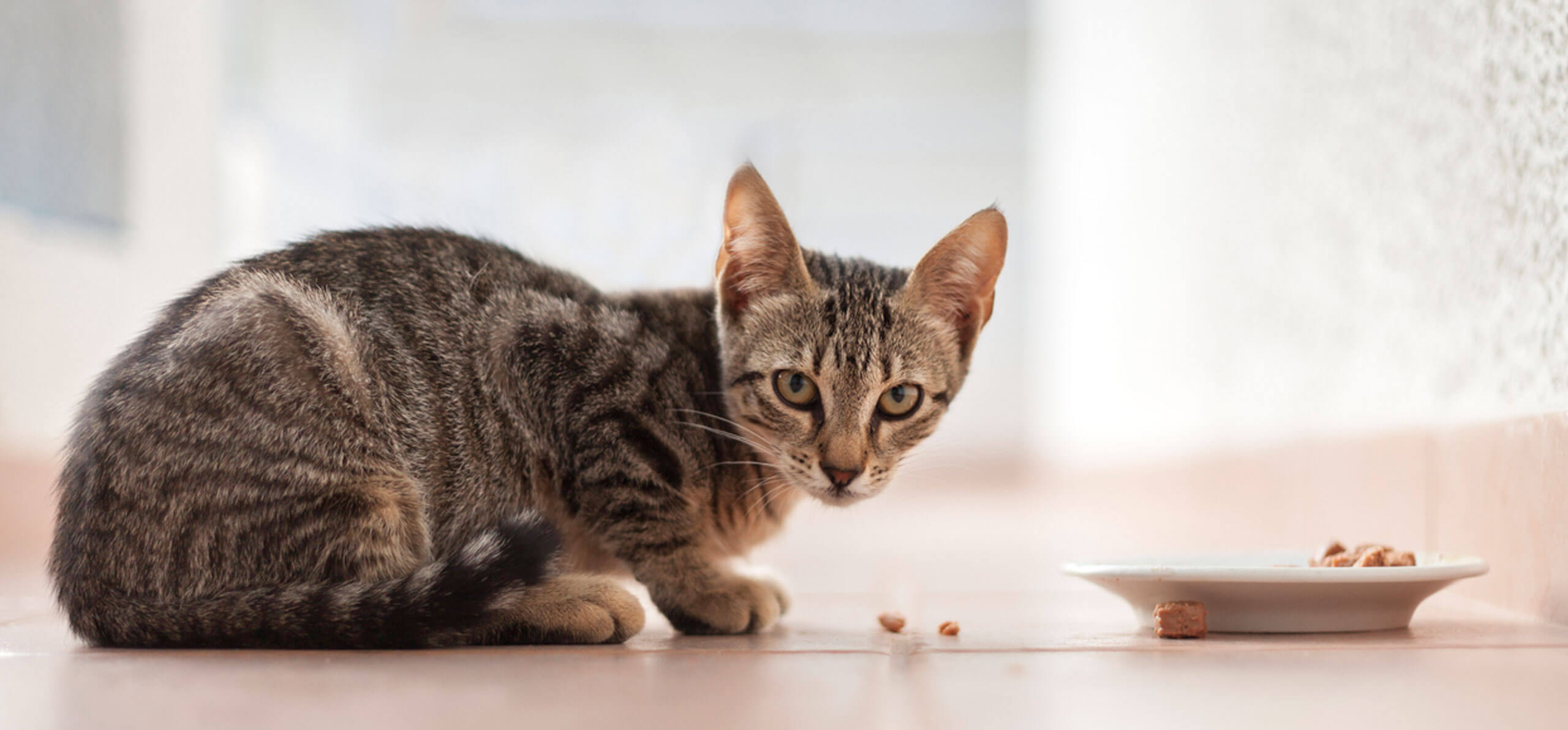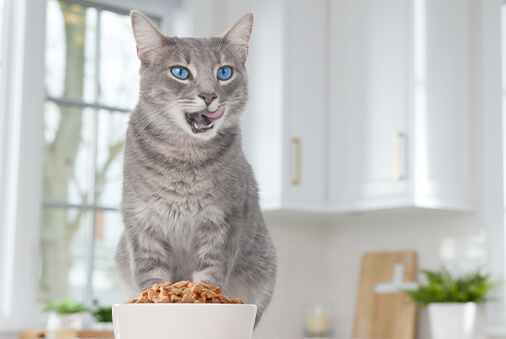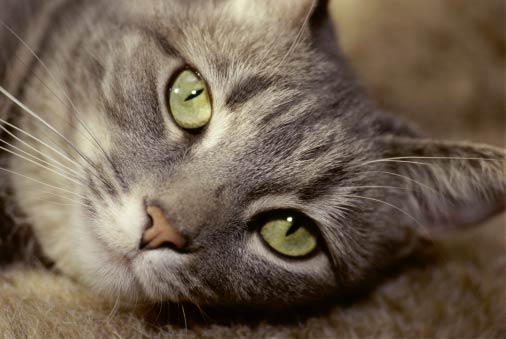The right food
For the first several weeks, mother’s milk is your kitten’s primary food source. By the time your little feline is ready to be yours, she’s most likely graduated to real kitten food.
Good nutrition, including both the right nutritional qualities and type of food, is critical as soon as your kitten comes home. A mix of both wholesome wet and dry food is recommended for the first eight to 12 weeks. As your kitten develops her tastes, experiment with different flavors and textures to discover what she likes best.
Meow Menu
Sample this Feeding Schedule for your Kitten
Morning Meal
- Bowl of water with 1 to 2 cups of fresh water, shallow enough for your kitten to access easily
- 1/3 to 1/2 of a 5-oz. can of wet cat food; refrigerate remaining portion
- 1/4 to 1/3 cup of dry kitten food to eat during the morning; see how much she eats and increase if necessary
- Fresh food puzzle toy filled with dry kitten kibble or high-protein kitten treats to stimulate hunting and play
Lunch/Midday
- Refresh water bowl with fresh water
- 1/4 to 1/3 cup of dry kitten food
- Reward with kitten treats for training skills, like “up” and “sit,” and to get your kitty to learn her name
Dinner Time
- Refresh water bowl with fresh water as needed
- 1/3 to 1/2 can of wet cat food; you can use the remainder from her morning meal
- 1/4 to 1/3 cup of dry kitten food to eat “buffet-style” during the night when felines tend to be more active
Read the labels
The most important aspect of your kitten’s diet will be on the label. PetMD recommends feeding “high-quality, high-fat, high-protein kitten foods in different flavors.” In this early stage of her life, a fat- and protein-rich diet is essential for your kitten because she’s growing and developing quickly.
Foods like the BLUE™ Healthy Growth Chicken and Brown Rice Recipe dry food and BLUE Wilderness® Kitten Salmon Recipe wet food are specifically designed to give growing kittens the nutrients they need without any fillers or by-products. Both formulas contain nutrients that help promote brain and eye development, healthy muscle growth and essential energy your kitten needs for play.
Plus all BLUE™ dry formulas contain a precise blend of nutrients and antioxidants exclusive to Blue Buffalo pet food, called LifeSource Bits®, which also provide immune support and life stage benefits for your growing kitten.
Keep in mind that the suggested serving size on kitten food labels may need adjusting depending on your feline’s specific development.
Timing is everything
While the perfect feeding schedule varies from family to family, it’s important to establish one early on. PetMD recommends arranging a schedule to fit with your routine, but keep it consistent from day to day. Your new kitten will appreciate a routine just as much as you do, and her feeding is an integral part of her daily routine.
Three to four meals a day is recommended during your kitten’s first six to nine months. Young cats require more food because they’re so active and develop quickly.
Growing kittens need as much as three times more calories and nutrients than adult cats. Their small stomachs can’t contain the necessary amount of food they need for energy every day if you only feed them once or twice daily.
Once your kitten is a year old and her growth slows down significantly, reduce feedings to twice a day, again following a reliable schedule.
Water your kitten
Fresh, clean water is as crucial to your kitten’s health as your own well-being. Hydration keeps her body developing and running smoothly while she grows and matures. Rinse and refill her water bowl at every feeding and give it a good cleaning at least once a week.
Read more about hydrating your feline.
Lots of love, proper veterinarian care and a wholesome, delicious diet will help your kitten grow into a healthy adult and lifelong companion.





